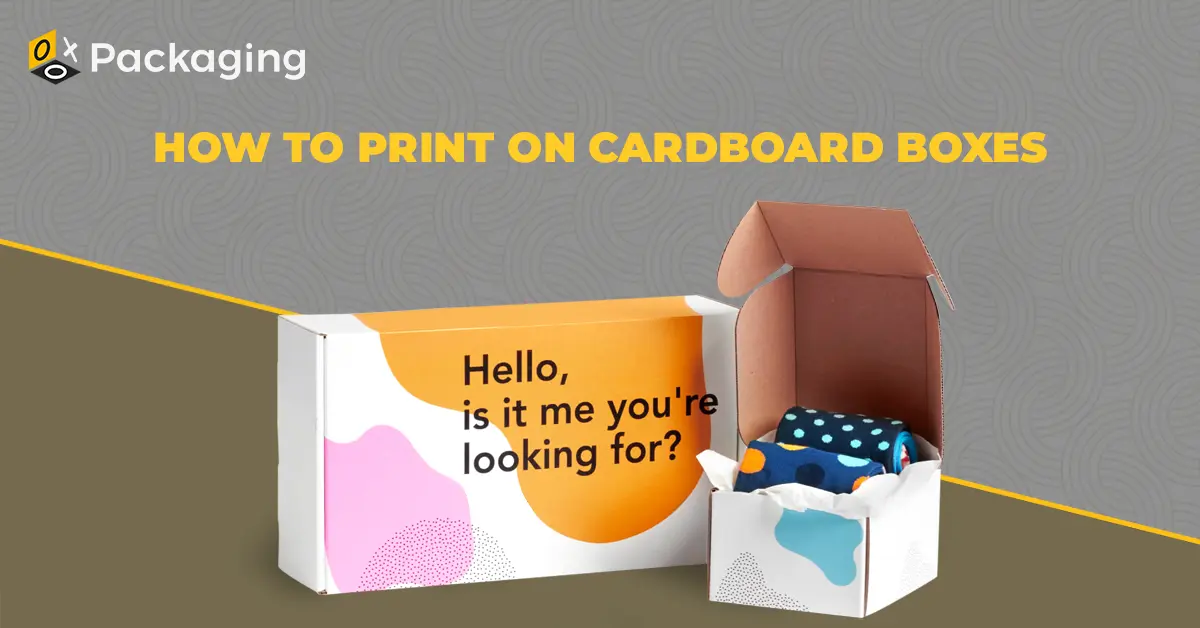How To Print On Cardboard Boxes - Everything You Need To Know

Printing on cardboard boxes can be a daunting task. Every brand wants to make a statement with their packaging. In the dull void of plain boxes, having packaging that stands out is always great. High-end printing is the best way to achieve this. But how to print on cardboard boxes? Well, this blog will answer this question so you can set your brand apart.
How to Print On Cardboard Boxes:
When it comes to printing on cardboard packaging boxes, there are a few different techniques to achieve this. Each printing method has its applications and benefits. So let’s discuss these printing techniques in detail to help you understand the best one for your printing requirements.
Flexographic Printing:
If you ask a packaging manufacturer how to print on corrugated cardboard boxes, they will answer with flexographic printing. This printing technique is known for its flexible nature. It is excellent for printing jobs that come with a short turnaround.
Flexographic printing involves using plates to print designs on your corrugated boxes. Each plate carries designs in different colors that are then moved onto the box. Each plate is attached to a drum, and the material to be printed is moved through each roller drum to complete the final design.
While it may have its uses, flexographic printing is not great for intricate designs. Each different color you use in your design will have its plate, which can make the design job too complex.
However, this technique is excellent for a relatively simple design with fewer colors. This can produce high-end results while keeping the colors consistent.
Lithographic Printing:
The second technique that answers the question of how to print on cardboard boxes is lithographic printing. It may often be referred to as offset printing and is an excellent choice for bulk printing requirements.
Like flexographic printing, lithographic printing also breaks down a design into different plates with different colors. However, lithographic printing has a special plate that repels ink to avoid ink spots that may form due to ink spreading on different plates. This ensures you get a crisp, clean, and smooth design.
In lithographic printing, the design is transferred from the plates to the drum, then transferred to the printing surface. This means you can have a perfect design job.
Lithographic printing, like flexographic printing, can come at a very high cost. This is because you have to pay for each plate separately, which can increase the price. So if you don’t have a bulk order requirement, this is not the technique for you.
Digital Printing:
The last technique we have for you is digital printing. It is the most affordable printing technique you can use and fits almost every kind of printing requirement. The best thing about digital printing is that it can produce bright colors and work with intricate design requirements. This lets you produce high-end and colorful packaging boxes.
Another benefit of using digital printing is the affordability it offers. It does not use printing plates, so you can save a lot of money on the printing plates cost. Also, when you use digital printing, you are not limited to the color choices. You can use any color you want, and digital printing can produce it ideally for you.
With the benefits of printing with digital printing, there are also some downsides. The first downside of using digital printing is that you don’t have flexibility with the material. It may work well when printing cardboard but is not the ideal choice for printing on corrugated cardboard boxes. Along with that, digital prints can fade away quickly, so this technique doesn’t tick the box for durability. Also read the pros and cons of offset and digital printing.
Printing Methods For Corrugated Cardboard Boxes:
So now that you have the knowledge about different printing techniques let’s go over some methods specifically for corrugated cardboard boxes. There are two different methods you can use when printing on corrugated board. These are;
- Direct Printing
- Pre-Printing
Direct printing is the method used by digital and flexographic printing rather than lithographic printing. Direct printing involves printing directly onto the corrugated board surface. No additional surface is used to transfer the image onto the box.
The other method, pre-printing, prints the image on a separate surface rather than the corrugated material. This is where lithographic printing comes in. Using this method can help you produce high-end printed results. In pre-printing, you can print multi-colored designs on a sheet of paper that can then be transferred to the corrugated board. This allows you to produce high-end graphic results on the surface of corrugated cardboard, which is impossible with direct printing.
How To Print On Cardboard Boxes At Home:
If you need to know how to print logo on cardboard box or any other designs at home, here is a guide for you. Now you won’t have a cardboard box printing machine at home, so we’ll work with what you have. So here is a step-by-step process on how to print on cardboard boxes at home.
Gather The Supplies:
So first, you need to get the supplies required to achieve this job. The supplies you will need for this job include a screen printing frame, acrylic or fabric paint, squeegee, stencil or design, masking tape, and a flat surface to work on. Once you have arranged these, you are good to go.
Create The Design:
Create or prepare the design you want to print on the corrugated box. If you have design skills, the best approach would be to create your own design. If using stencil, you need to cut the design from the stencil sheet.
Hold The Box Tight With Tape:
Tape the box to a flat surface to hold it tight. This ensures the box doesn’t move when you print your design on the surface.
Position The Stencil Onto The Printing Surface:
The next step in this process is to position your stencil screen onto the area you wish to print. Position it precisely and check for any placement issues that may cause a design mess.
Apply Ink:
Spread the acrylic or fabric paint, whichever you use, onto the screen and use the squeegee to apply it to the complete surface to cover the entire design. Ensure to apply the paint evenly onto the complete surface.
Print The Design:
Carefully press the squeegee down onto the surface while holding the screen in place to transfer the complete design to the corrugated surface.
Lift The Screen:
Once you have pressed the design completely, lift the screen very carefully to reveal the design. If done correctly, you will get a perfectly printed design onto your corrugated board.
Let It Dry:
The last step is to let the design dry. The paint needs time to dry out, so hang it and let it dry out to get the final design.
So this is the complete process of printing on cardboard boxes at home.
Conclusion:
So this is how to print on boxes when you choose a packaging supplier or print at home. This article has helped you understand the process of printing. Keep visiting OXO Packaging for more latest printing and packaging news.




